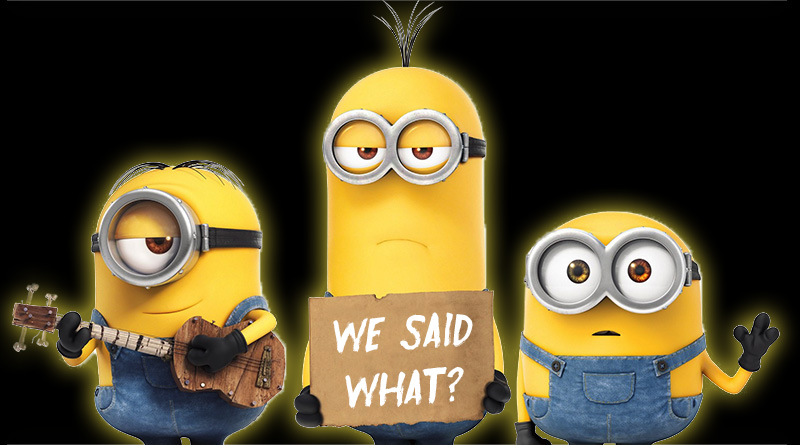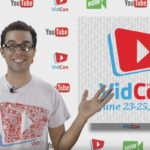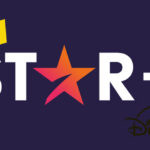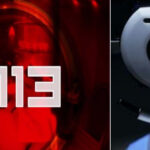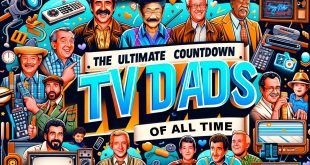For decades now, movies have provided us with fun ways to get involved, be it in the form of conventions, cosplay or learning the character’s language.
From Dothraki courtesy of Game of Thrones to the well-beloved Star Trek Klingon, movies have given us a whole selection of fake tongues to master. The latest language craze is Minionese, as spoken by the lovable Despicable Me Minions.
But even some hardcore fans are left wondering how to string together a Minionese sentence or two. Interestingly, once you understand the origins of the pop culture language, it’s a whole lot easier than you realized.
The Minion Language
Minionese, sometimes called the Banana Language, is actually a fun mashup of a couple of different languages from around the globe, including Italian, Spanish, Japanese, Malay, Indonesian, and a few others.
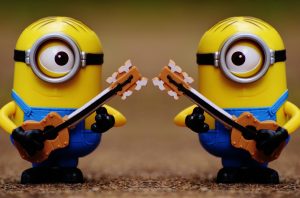
Let’s look at a couple of examples:
Spanish – para tu means “for you”
French – c’est par la means “this way”
Hindi – be wakuf means “idiot”
So, what’s with the wild mixture of lingos? Well, the Minions have been around for a very long time. The nomadic tribe is always in search of their next master, and during their adventures, they’ve soaked up bits of languages from around the world.
At its very core, Minionese includes basic forms of French, Egyptian, and even Transylvanian from their days serving Count Dracula. There are even a few proper Homo sapiens grunts and grrs thrown in for good measure.
The fact that the Minions topple pretty much every master they serve explains just why their mother tongue is so varied. They’re always on the move.
Yet it’s still one tough language to get the hang of. It’s pretty hard to understand their words and grammar. Yet, we do figure out exactly when they’re happy, sad, or in a position of conflict.
Minionese Is Pure Genius
There’s no denying that the Minions get back to some seriously cute roots, too. The entire language just sounds adorable, and that’s because it actually imitates baby talk to a point.
The pitch of their voices shifts upwards, using simple vowel-consonant syllables (think “ba-na-na”). It has those “b” and “p” sounds which are the first consonants babies pick up. Just take a look at some of the other words as an example:
Bello – hello
Baboi – toy
Poopaye – goodbye
Bable – apple
But, Minionese is not merely a baby-fied version of the different languages. According to Director Pierre Coffin, the language was made up as he went along. He had his takeout menus ready, he knows a little Italian and Spanish and so he had a ton of sources for inspiration. Coffin says he’d pick a word that doesn’t quite express something by the meaning but instead the melody of the words.
Yet, whether he meant to or not, some meaning does come into play, and often in ways that even reinforce the baby talk element.
In the one scene where the Minions are hitchhiking, one says “me la due, spetta” which is just about Italian for “I’ll do it, wait.” (In proper Italian, it’s io lo foaccio, spetta). The Minions, though, use “me” rather than “I” so it translates as “me do it,” just the way a toddler would say it.
An Interesting Spin on Languages
While Minionese isn’t quite a fully-fledged language the way Dothraki or Klingon is, it’s certainly a whole bunch more interesting that the likes of Ewokese, the babblings of the Ewoks in Star Wars. Ewokese is another language that was put together for the sake of cuteness and is said to be based on the general sounds of Kalmyk, a Central Asian language.
But Ewokese has no particular meanings to it. All the actors did was listen to random recordings of a language and imitate it. Genuine Kalmyk speakers wouldn’t even recognize a connection.
It’s different with Minionese, though. Speakers can “hear” their languages because the phrases tend to work with whatever the Minions are doing.
For example, when the Queen gives a minion her crown, he says “thank you” (terima kasih) which is Indonesian. When the crew gives a toast, they utter kampai, which is Japanese for “cheers!” What’s more, they us Tagalog to ask, “can we?” and they even count in Korean.
Overall, the use of this suggestively international and rather babyish language has been expertly deployed on the screen within the surrounding context. It means as an audience, we never arrive at the weird feeling of being lost.
Best of all, Minionese is the real deal!
What’s your favorite Minionese word?
Become a Member of the Crazy Nate community and get exclusive emojis, secret votes for future videos, see the videos first, and much more.
Image: Pexels
 Crazy Nate Share a smile!
Crazy Nate Share a smile!

